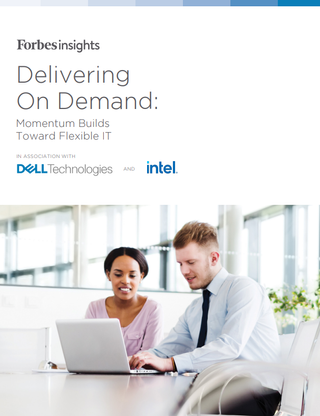How to keep your mobile workforce happy
Why employee wellbeing is a vital business metric, and how your organisation can achieve maximum results

The flexible working trend will outlive the pandemic, bringing with it greater productivity and a healthier work-life balance. Our brave new work-from-home world doesn't guarantee happiness, though. As it turns out, maintaining morale among a scattered workforce is a greater challenge than ever.
On the face of it, the mass shift to remote working has been great for output, with productivity confounding expectations, even in traditionally site-based sectors such as education. "There was an assumption that remote working would have a negative impact on productivity," Al Kingsley, author of My Secret #EdTech Diary and CEO of edtech platform NetSupport, tells IT Pro. "The reality is staff are just as effective, and in many cases, more effective."
Employers are so satisfied, says a 2021 CIPD report, that 63% now plan to introduce or expand flexible working. Similarly, Accenture finds 63% of high-growth companies plan to keep a "productivity anywhere" model following the pandemic.
Technology has benefited, too, with the need to collaborate and manage remotely triggering a fast-forward digital transformation mindset. "It gave companies a kick in the butt," says Marko Gargenta, founder of Twitter University and CEO of knowledge-sharing platform PlusPlus. "They've had to upgrade their tech, and upgrade their work ethics and practices."
But there's a rain cloud over this happy picture: the so-called great resignation. The rise in enterprise mobility has coincided with the highest workforce quit rate in well over a decade. Workers appear to have realised that there's more to life than a job they don't like, which means happiness is now a vital business metric.
Work from home, or live at work?
People working from home tend to spend more time on the job, reports the ONS. That may be good for short-term productivity, but not for wellbeing or long-term growth, says Nick Gallimore, director of talent transformation at Advanced. "The reality is we’re more burnt out than we were pre-pandemic, and more likely to leave our current roles. After all this change, work doesn't feel good any more for some people. We don't work from home, we live at work."
The "epidemic of hidden overtime", as think tank Autonomy has called it, is blamed by Gallimore on a lack of clear vision by managers, and tech overload. "We all become really busy, but not on things that are actually important. Companies have to do a better job of setting out what specific work is important, and why. Otherwise I'll end up working all night because I don't know if I provided any value today."
Cloud Pro Newsletter
Stay up to date with the latest news and analysis from the world of cloud computing with our twice-weekly newsletter
The rush to roll out remote-work apps and platforms has left people feeling overwhelmed and confused. If companies don't spend time explaining this tech, and its purpose, then hours will be wasted trying to figure it out. "Don’t believe any vendor that tells you 'this is foolproof'," says Freeform Dynamics analyst Tony Lock. "Everyone could use advice with tech, so spend that time. It also shows you're interested in how your remote workers are getting along. Ask them for feedback, and offer to take their suggestions on board."
Don’t let that interest spill over into monitoring, however. "Checking to see if workers are looking at the screen, for example, is totally illegal in Europe, but the Americans can do it," says Lock. "These things actively disincentivise your workforce. And you need to measure the right metrics. How many keys have they typed in today? Wrong! How happy are their customers? That's the important one."
You don't need key-loggers to make your remote workers feel spied on, says Gallimore. All it takes is what he calls a "notification culture". "Anybody can send me a message, with an expectation that I'm going to drop what I'm doing and respond to it now. That is not healthy," he adds. Autonomy has called for a "right to disconnect", allowing workers to refuse to take calls or respond to work emails outside certain hours.
Happiness is a hybrid workplace
The move towards a hybrid model, with a mix of remote and office working, is now seen as a must-have, with over half (51%) of UK workers saying they might quit their job if the flexible option was removed. It offers staff the best of both worlds: the freedom to work from anywhere, plus the mental health benefits of mixing with work colleagues.
Eliane Lugassy, business lawyer and CEO of HR app Witco, sees contact as essential for morale. "When you come into the office, it creates a relationship that you can't create without it. We are human beings, and we need to socialise. People also need to be trained, especially younger people. Younger people, too, often live in smaller spaces where they can't have an office room."
But the hybrid model creates its own wellbeing challenge, namely a two-tier workforce. While those young staff escape their cramped house-shares and mingle over the coffee machine, remote workers – often valuable older staff who embrace working from home – are left feeling excluded, socially and professionally.

Delivering on demand: Momentum builds toward flexible IT
A modern digital workplace strategy
So remote workers must be included in conversations, says Tony Lock. "Set up special interest groups on chat channels. It's really important that not all the communication is about work." Shy workers may particularly welcome being included, says Lock. "Some people are less automatically interactive. You have to be proactive, and keep that conversation going." Don't push it, though; good management is about knowing your staff and knowing how sociable they want to be, even when they're remote.
Hybrid working also requires careful organisation if it's not to become another gimmick that causes more frustration than happiness. "You need to have some central system where people can log on and say, I'm thinking of going in tomorrow, will there be a desk for me? Who else will be in? Oh great, we can do some work together or chat about that Terry Pratchett book," says Lock. "People need access to that system, and feel enabled to use it, so they don't feel excluded." Get the hybrid workplace model right, and your staff will be delighted to come or go to work, wherever that may be.
Jane Hoskyn has been a journalist for over 25 years, with bylines in Men's Health, the Mail on Sunday, BBC Radio and more. In between freelancing, her roles have included features editor for Computeractive and technology editor for Broadcast, and she was named IPC Media Commissioning Editor of the Year for her work at Web User. Today, she specialises in writing features about user experience (UX), security and accessibility in B2B and consumer tech. You can follow Jane's personal Twitter account at @janeskyn.





